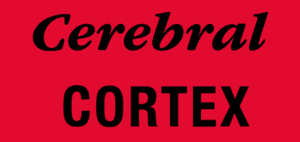LACE Auditory Training History
"It's all about the brain. It's not about the ears."

When the Grateful Dead called him to consult, Robert Sweetow, director of audiology for the UCSF Medical Center, wasn’t prepared for the level of technical expertise he’d encounter in the world of rock ‘n’ roll.
“It blows away my equipment,” Sweetow says of his first visit to Ultrasound, the band’s sound company. “We think we have state-of-the-art equipment, but our equipment is archaic compared to the equipment these guys are working with. And what was amazing was the knowledge. You know, I have a Ph.D. in audiology, and the knowledge these guys have about sound is better than mine, I thought.”
This unlikely marriage of rock and science led to the creation of a computer program that can help people cope with diminished hearing. LACE – which stands for Listening and Communication Enhancement – is based on the notion that even though hearing loss can never be reversed, listening skills can be improved.
All of this came about because Sweetow connected with the Dead in the ’90s.
In 2002, Sweetow ran across a former Dead audio engineer turned software designer and entrepreneur named Gerry Kearby, who had started the first Internet music distribution system with a digital rights management component, Liquid Audio. Kearby, who suffers from tinnitus — a constant ringing in the ears that can be caused by too much exposure to loud music — was looking at a business plan from some doctors who thought they could develop a cure for his condition. Sweetow had an idea of his own that intrigued Kearby.

Clinical Trial Results and Publications

The case for LACE
“…recent discoveries in neuroscience suggest that training may enhance auditory skills and even bring about changes in the central auditory system…”
The Need for and Development of LACE
“Auditory training has long been advocated to enhance communication but has never been time or cost-effective” …until now.

The Science
A sampling of scientific research and white papers supporting LACE.

LACE Auditory Training
Christou, Alana. Audiology Now. Issue 87. March 2022, Pages 15-17.
(Reprinted with permission of Audiology Australia.)

The effect of LACE DVD training in new and experienced hearing aid users
Olson AD, Preminger JE, Shinn JB. Journal of the American Academy of Audiology. 2013 Mar;24(3):214-30.

Training to Improve Hearing Speech in Noise: Biological Mechanisms
Judy H. Song, Erika Skoe, Karen Banai, Nina Kraus. Cerebral Cortex. Volume 22, Issue 5, May 2012, Pages 1180–1190.

The Economics of Computer-Based Auditory Training
Brian Taylor, Al Shrive. Audiology Online. July 2008.

Software-based auditory training program found to reduce hearing aid return rate
Martin, Melody. The Hearing Journal: August 2007 – Volume 60 – Issue 8 – p 32,34,35.

The need for and development of an adaptive Listening and Communication Enhancement (LACE) Program
Sweetow RW, Sabes JH. Journal of the American Academy of Audiology. 2006 Sep;17(8):538-58.

The case for LACE
Sweetow, Robert W.; Henderson-Sabes, Jennifer. The Hearing Journal: March 2004 – Volume 57 – Issue 3 – p 32-35,38,40.
Hear from others
LACE encouraged me to try harder and as a result I learned where my weaknesses are and how to help strengthen those weaknesses. The program is easy to use and does not take a lot of time each day so you don’t mind following through with the training. I think I am a better listener now.
I found the program very useful and noticed a marked improvement in my listening over time. I also experienced a leap in confidence in all my social listening. I also noticed that I often did not understand the first time something was played but that it became easier with repetition. I liked being able to playback what I heard and found this very helpful as things began to become clearer the more I listened.
I completed the training and I am very happy with the results. I feel so inspired, and grateful to understand the process of learning to hear with the brain. Thank you, The LACE Company, for giving me back my Youth and Joy of enjoying my many lectures, family, friends and group meetings.
Thanks for the opportunity to get practice and feedback in improving my ability to hear! I have been in a number of situations since I began my training that I am sure I would not have been able to understand what was going on before I had the training!
Thanks so much for this great program! I feel that many of the tasks have assisted me in learning to actively listen to those speakers around me no matter what the listening environment presents. LACE is an extremely effective way to increase one’s listening skills over time!
I have had a hearing loss since birth, but it was only detected at the age of 45. The LACE program has taught me the importance of paying attention and helping to block out background noises. I would highly recommend it!
READY TO GET STARTED?
Getting started is easy
Begin taking the first step to improving your auditory comprehension.
We’ll walk you through the process.
